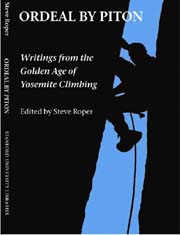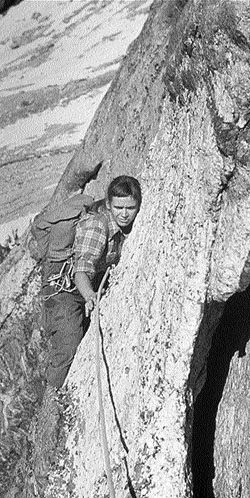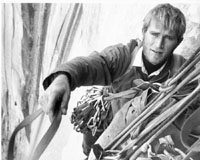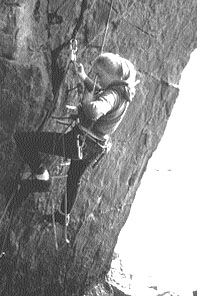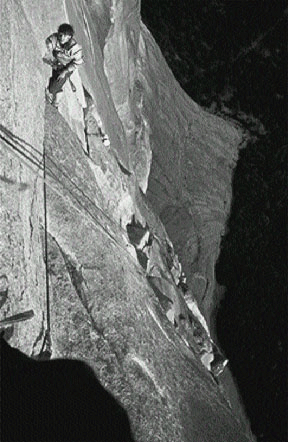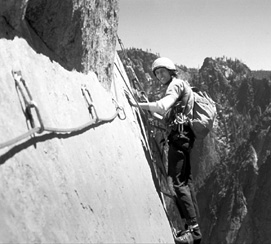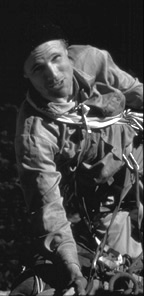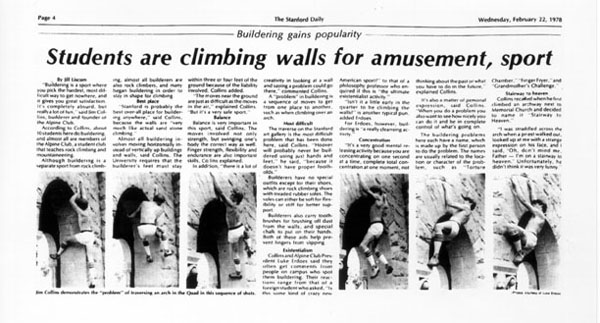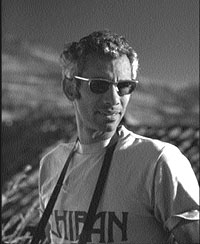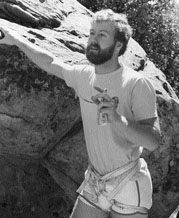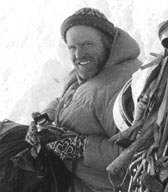 Henry
Kendall, Cordillera Blanca, 1964. Copyright ©2000 Tom Frost.
Henry
Kendall, Cordillera Blanca, 1964. Copyright ©2000 Tom Frost.
|
Henry Kendall began photographing as a teenager in New England. Already an experienced
diver, he began taking underwater stills and movies in the Florida Keys,
coauthoring a book on the subject. He came to Stanford in 1956 to do advanced
research in physics, joined the SAC, and began to climb.
In Yosemite Kendall saw that the magnificent visual situations
encountered could best be captured with a small camera carried on the
body--not in the pack--and used as the action unfolded, pitch by pitch.
He chose a folding Kodak Retina II 35-mm camera, using fine-grained, ASA
32, Panatomic-X film.
Kendall wrote that a camera "is one of the last pieces of nonessential
equipment to be discarded in preparation for a difficult ascent. In one
way, however, a camera is an essential piece of equipment because,
beyond tenuous memory, photography is the only means by which the
climber can relive and reenjoy the qualities of an ascent."
In the Cordillera Blanca, Leigh Ortenburger encouraged him to use
a 4x5 camera. Kendall was inspired by the possibilities of the larger
format, especially for landscapes.
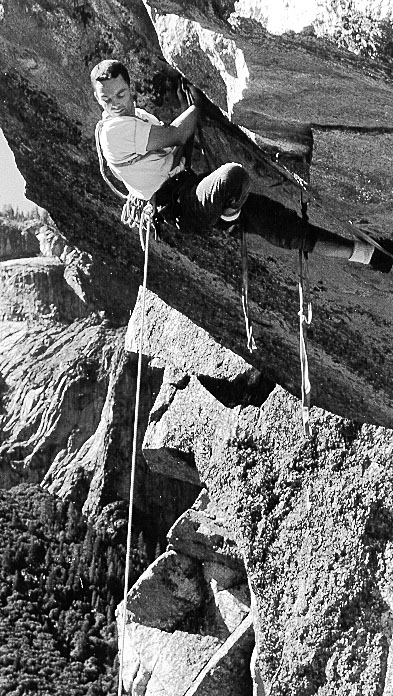
"One
of his great photos was of me nailing a roof he had spotted up near
the Overhang Bypass" --Tom Frost, shown during the first ascent
of The Roof, Lower Cathedral Rock, Yosemite, 1958. Copyright ©2000
by the Estate of Henry Kendall.
|
Awarded the Nobel Prize for physics in 1990, Kendall made the following comments, published in the Nobel Prize Annual:
I like to go in the mountains to places no one has been before. The
world is an astonishingly beautiful place. It's beautiful at the deep
level of physics, way down inside things. What we know of the universe
that's visible to us is also of astonishing beauty, and I like to see
that and explore it. That's why I take photographs.
Kendall was Tom Frost's mentor at Stanford. Frost described their
relationship with the exact words Kendall used for Harlin, "He took me
under his wing and taught me how to climb." And Kendall took
photographs. "He would give me a print of the odd photograph of us
climbing together," Frost recalled. "One of his great photos was of me
nailing a roof he had spotted up near the Overhang Bypass." Frost also
credited Kendall with his branching out from Yosemite Valley to the
great peaks of the Andes and Himalaya.
Richard Blankenbecler, a physics graduate student and member, also
admired Kendall and Kendall's roommate Hobey DeStaebler because they set
a high standard for the club--a standard not only of climbing
difficulty, but also of safety and camaraderie. Blankenbecler
elaborated:
Henry knew what he wanted, but it wasn't in his nature to achieve
something at some other person's expense. He taught me that while
climbing was no mere game, it ought to be fun. And while there's
competition, it need not be outright competition. You climb with a
partner and there's a fellowship there. That was at the essence of the
activity.
Steve Roper remembered as a teenager meeting Kendall:
One afternoon in late 1956, in Pinnacles National Monument, a young
man with a square jaw saw me gazing longingly up at a towering crag
called North Finger. He had just rappelled from its summit and was
coiling a rope. Incredibly, he asked me, a fifteen-year-old kid, if I
wanted to do it. I jumped up and shyly told him that my elders didn't
think I was ready for it. He laughed and began uncoiling his rope. And
so I met quiet Henry Kendall, just arrived at Stanford and quite pleased
to have encountered our group. Fifteen minutes later we were shaking
hands on the summit, watching the rest of our small band scurry down the
trail in the waning light. I never saw Henry again, but every time I
encountered his illustrious name in the next four decades I recalled his
generosity.
Henry Kendall died in a diving accident in 1999.
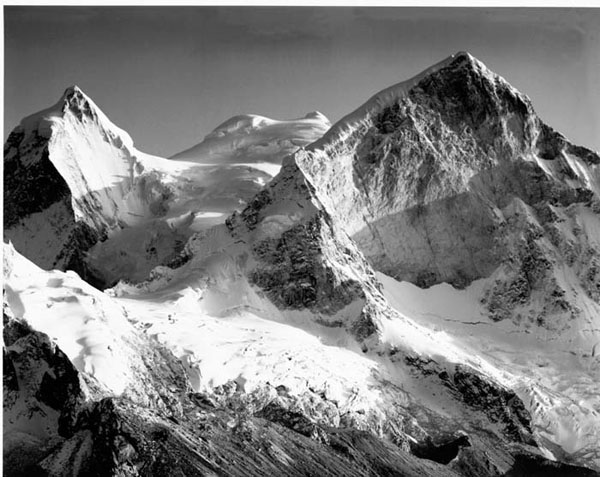
Huandoy Group from
the slopes of Huascarán Norte, 1964. Copyright ©2000 Estate
of Henry Kendall.
|
